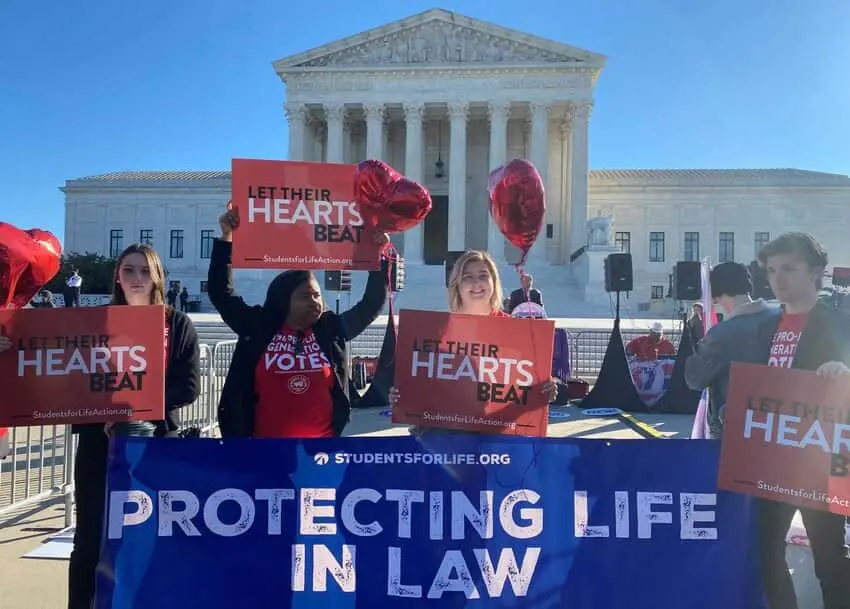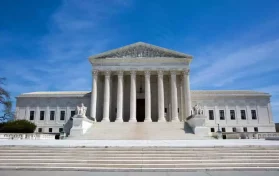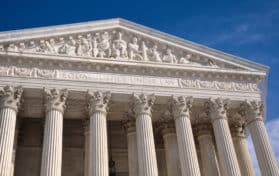
One month ago, a leaked draft of an opinion regarding the Mississippi abortion law case, Thomas v. Jackson Women’s Health, caused an uproar across the country. The opinion, written by conservative Justice Samuel Alito, appeared to overturn Roe v. Wade. Protestors immediately began gathering outside the Judicial Building in Washington, as other protests broke out across the country. Eventually, demonstrators would gather outside the homes of the conservative Supreme Court Justices. The Senate took a bill regarding abortion (it had already passed in the House of Representatives). The measure was defeated 51-49, with Democrat Joe Manchin siding with his Republican colleagues on the matter.
The announcement that the ruling could be made public on Monday comes after yet another leak. This information comes from a Department of Homeland Security memo showing the Biden Administration “is preparing for a nationwide wave of violence following” the official handing down of the Supreme Court’s ruling.
In addition to protestors gathering outside the justice’s homes, at least pro-life crisis pregnancy centers have been vandalized. Multiple Catholic churches have been threatened with some vandalized as well.
Axios reported on the leaked DHS memo, revealing that there are investigations currently ongoing into “threats to burn down or storm the Supreme Court building.” The memo is dated May 13.
Ironically, the memo “goes on to clarify that rhetoric supporting violent extremism does not itself constitute extremism.” The memo reads: “The mere advocacy of political or social positions, political activism, use of strong rhetoric, or generalized philosophic embrace of violent tactics does not constitute domestic violent extremism or illegal activity and is constitutionally protected.”
The justices have not announced that the are certain to hand down the ruling on Monday. However, the Supreme Court routinely hands down rulings on Mondays at 10:00 AM (Eastern time). That means that the next opportunity could come on Monday, May 23. While it is possible that the justices could hand down the decision on that day, the Supreme Court tends to issue rulings on “more closely watched cases” near the end of the term. Typically, the Court ends its term on the last week in June or the first week of July each year, but it is not uncommon for the Court to add additional dates in order to release opinions.
Since the Alito opinion draft was leaked, a large fence was erected around the Judicial Building in Washington. There have been other security measures put into place as well. Last week, the Senate unanimously voted to increase security for the justices in the wake of the leak. The legislation is called the “Supreme Court Police Parity Act,” and it gives the Supreme Court police the authority to arrest individuals who “interfere with the court’s ability to perform its duties.” The bill also establishes a criminal penalty those who would obstruct the ability of the justices to carry out their duties.
The bill has stalled in the House of Representatives, however. Some Democrats claim that the legislation “does not go far enough” in providing protection to law clerks as well as Supreme Court staff.
Speaker of the House Nancy Pelosi remarked that law enforcement should be able to determine how to respond to threats against the Justices. She told Fox News, “I think that any need for protection should relate to whatever threat that is there, and that’s a judgement that is made by our law enforcement.”
Senator Dick Durbin (D-IL) also expressed a lack of support for the bill, saying that he believes “House Democrats should hold up” on passing the legislation.
Some have said that the protests outside the homes of the conservative Justices is illegal, and that it could be likened to attempting to influence the final ruling of the Court. This comes from Title 18, Section 1507 of the U.S. Code, which has been on the books since 1950. However, whether or not protests outside a Justice’s home is illegal is up to the interpretation of the court.





